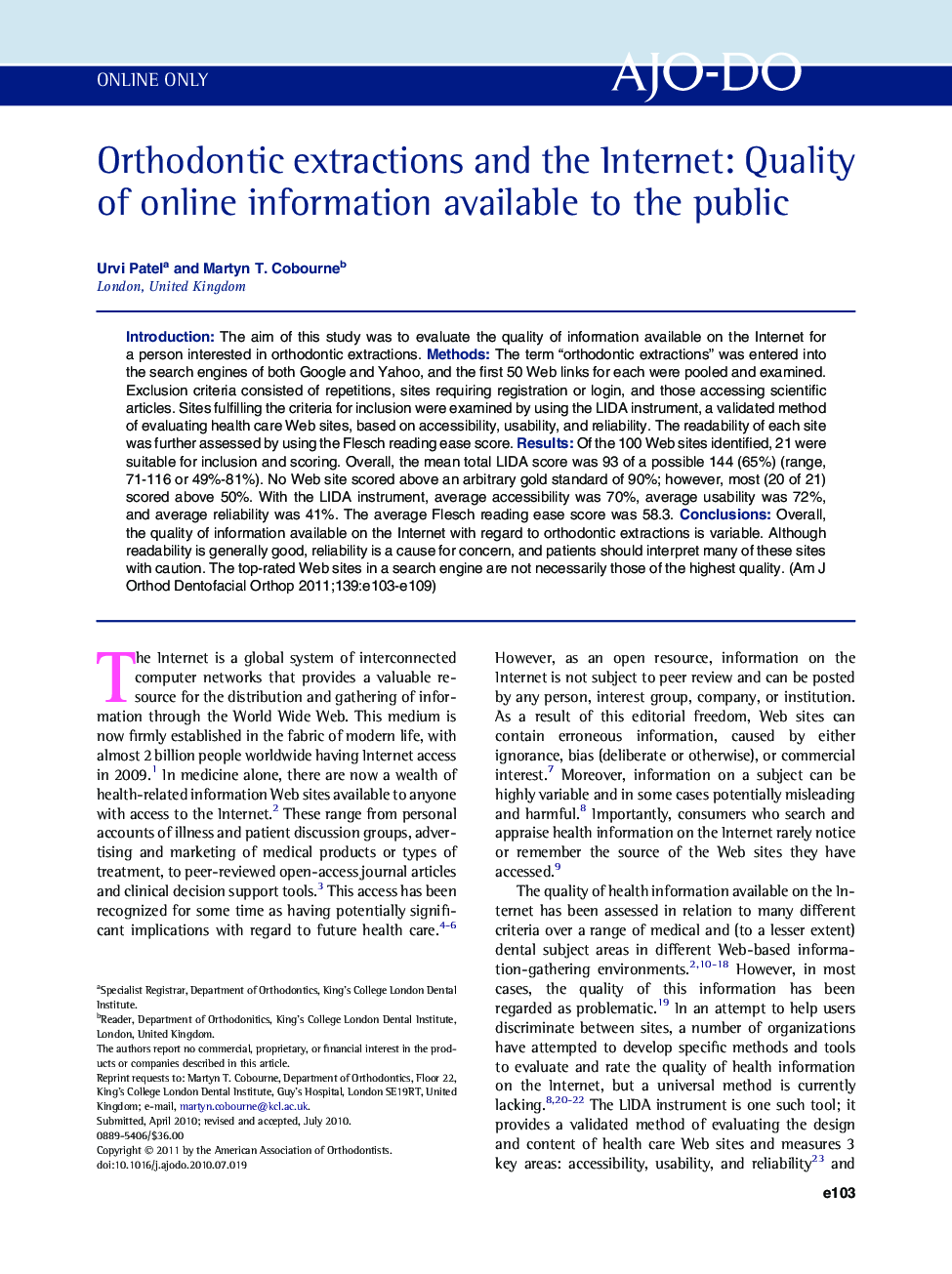| Article ID | Journal | Published Year | Pages | File Type |
|---|---|---|---|---|
| 3117786 | American Journal of Orthodontics and Dentofacial Orthopedics | 2011 | 7 Pages |
IntroductionThe aim of this study was to evaluate the quality of information available on the Internet for a person interested in orthodontic extractions.MethodsThe term “orthodontic extractions” was entered into the search engines of both Google and Yahoo, and the first 50 Web links for each were pooled and examined. Exclusion criteria consisted of repetitions, sites requiring registration or login, and those accessing scientific articles. Sites fulfilling the criteria for inclusion were examined by using the LIDA instrument, a validated method of evaluating health care Web sites, based on accessibility, usability, and reliability. The readability of each site was further assessed by using the Flesch reading ease score.ResultsOf the 100 Web sites identified, 21 were suitable for inclusion and scoring. Overall, the mean total LIDA score was 93 of a possible 144 (65%) (range, 71-116 or 49%-81%). No Web site scored above an arbitrary gold standard of 90%; however, most (20 of 21) scored above 50%. With the LIDA instrument, average accessibility was 70%, average usability was 72%, and average reliability was 41%. The average Flesch reading ease score was 58.3.ConclusionsOverall, the quality of information available on the Internet with regard to orthodontic extractions is variable. Although readability is generally good, reliability is a cause for concern, and patients should interpret many of these sites with caution. The top-rated Web sites in a search engine are not necessarily those of the highest quality.
